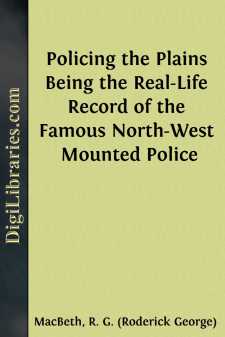Categories
- Antiques & Collectibles 13
- Architecture 36
- Art 48
- Bibles 22
- Biography & Autobiography 813
- Body, Mind & Spirit 138
- Business & Economics 28
- Children's Books 12
- Children's Fiction 9
- Computers 4
- Cooking 94
- Crafts & Hobbies 4
- Drama 346
- Education 46
- Family & Relationships 57
- Fiction 11821
- Games 19
- Gardening 17
- Health & Fitness 34
- History 1377
- House & Home 1
- Humor 147
- Juvenile Fiction 1873
- Juvenile Nonfiction 202
- Language Arts & Disciplines 88
- Law 16
- Literary Collections 686
- Literary Criticism 179
- Mathematics 13
- Medical 41
- Music 40
- Nature 179
- Non-Classifiable 1768
- Performing Arts 7
- Periodicals 1453
- Philosophy 64
- Photography 2
- Poetry 896
- Political Science 203
- Psychology 42
- Reference 154
- Religion 505
- Science 126
- Self-Help 81
- Social Science 81
- Sports & Recreation 34
- Study Aids 3
- Technology & Engineering 59
- Transportation 23
- Travel 463
- True Crime 29
A Historic Sketch Lest We Forget Company E 26th Ohio Infantry
by: Walden Kelly
Description:
Excerpt
About the fifth day of June, 1861, Sylvester M. Hewitt, assisted by several others, began the enlistment and organization of a company of volunteer infantry at Mt. Gilead, Morrow county, Ohio, under the first call of the President for three-year troops. Rapid progress was made and in a few days the good ladies of the community organized and prepared woolen underwear for the men. June 14th, 1861, the company, about 80
in number, formed on the North Public Square and marched to Gilead Station (now Edison), followed by nearly the entire people of the community. We boarded the train for Columbus and marched thence four miles west to the newly established Camp Chase, where the 23rd, 24th and 25th Ohio Infantry were being organized, and their quarters partially built. We were quartered in tents, and on the following day heavy details were made to commence building quarters for the 26th Ohio Infantry, the regiment towhich our company was assigned. Here our military education and discipline began and was continued unceasingly under the wise direction of our Colonel E. P. Fyffe, a West Point graduate, and his able assistants, until its adhesiveness, confidence and valor made it a fighting machine so perfect that no censure or taint mars its history, but several general orders and many personal compliments mark its career. To this regiment we became company E. The first commissioned officers of this company were elected after our arrival at Camp Chase, and were Captain Sylvester M. Hewitt, First Lieutenant Henry C. Brumback and Second Lieutenant James E. Godman. Captain Hewitt was promoted to Major and transferred to the 32nd Ohio Infantry, and James K. Ewart was commissioned Captain of company E, July 29th, 1861, the same date that we left Camp Chase for Virginia. The Quartermaster’s department was unable to furnish regulation uniforms as fast as the new troops organized, hence our first uniforms consisted of gray pants and roundabouts. This caused great annoyance during the first two or three months of our service in Virginia by our troops mistaking us for the enemy and firing upon us. General J. D. Cox ordered that we be kept on inside duty until properly uniformed. We arrived at the front at Gawley Bridge, Virginia, August 11th, 1861. After our gray uniform experience we were continually in front in all the campaigns of the army in which we served. We remained in Virginia until February 1st, 1862, and participated in the campaigns to Boon Court House, Sewal Mountain, Cotton Mountain, and Fayetteville and were engaged with the enemy at HorseshoeBend, Sewal Mountain and New River. The casualty of battle, however, was one. Corporal John McCausland, by concussion of a bursting shell, was seriously injured at Horseshoe Bend. Our loss from all causes was three deaths from disease and ten discharged because of disability. The company had seven deserters during its entire service, but as none of them were of value to the company or government, we drop them at this early stage. Some of them, however, were carried on the roll to a later date. One only of this number enlisted from Morrow county. The regiment was transferred to Louisville—“Way down in old Kentucky,
Where they never have the blues,
Where the Captains shoot the Colonels,
And the Colonels shoot the Booze”—
And marched to Bardstown where the regiment became part of the 15th brigade, commanded by General Milo Haskel; 6th division, commanded by General Thos. J. Wood; army of the Ohio, commanded by General Don Carlos Buell. In this brigade
the 26th regiment remained during the entire war, the other three regiments forming the brigade leaving us at different periods—the 17th Indiana to Wilders Mounted Infantry, the 58th Indiana became the pontooniers of the army of the Cumberland, and the 3rd Kentucky was transferred to General Harker’s brigade, remaining in the same division. In February, 1862, the division moved on Bowling Green, thenceto Nashville, Tenn., and from there was the 4th division in line of march, under Buell, to Pittsburg Landing, arriving on the field of battle as the enemy was leaving. Our wagons were left some miles in the rear, on the opposite side of the Tennessee River, and did not reach us for about ten days. We carried our rations from the Hamburg Landing to camp—a distance of nearly four miles. In the slow approach of our army on Corinth, Miss., we were several times quite heavily engaged, skirmishing with the enemy, losing a few men from the regiment, but company E suffered no losses. On the evacuation by the Confederate forces we were moved eastward along the line of the Memphis & Charleston railroad, crossing to the north side of the Tennessee River at Decatur, Alabama, about July 6th, 1862, thence through Huntsville northeast into Tennessee via Fayetteville, Winchester, Deckard and Hillsboro to McMinnville, on August 30th, 1862, by a very rapid march of eight miles. Terminating by a double quick, we succeeded in striking Forest’s cavalry, driving them so rapidly that we captured their ambulance, with medical supplies, and also one of the General’s horses. For rapidity of march and promptness in action the regiment was complimented in general orders by the division commander. September 2nd we started from McMinnville via Murfreesboro, Nashville, Bowling Green and Mumfordville, for Louisville, Ky., to intercept Bragg, who had invaded Kentucky through East Tennessee and was threatening Cincinnati and Louisville. We were the advance division under Buell, skirmished heavily with the enemy at Mumfordsville, reaching the Ohio River 20 miles below Louisvilleat dark, and, continuing the march during the night, reached Louisville, Ky., at 3 a. m., September 23rd, 1862. October 1st the army moved from Louisville, via Bardstown to Perryville, where, on October 8th, the battle of Perryville was fought. We were on the right in battle line under General George H. Thomas and skirmished lightly with the enemy, expecting orders, which never came, to attack. We listened to the roar of the battle to our left and were not heavily engaged; we followed the retreating enemy through Danville, skirmished heavily with them at Stanford and followed on southeast through Crab Orchard to about 30 miles beyond Mt....











